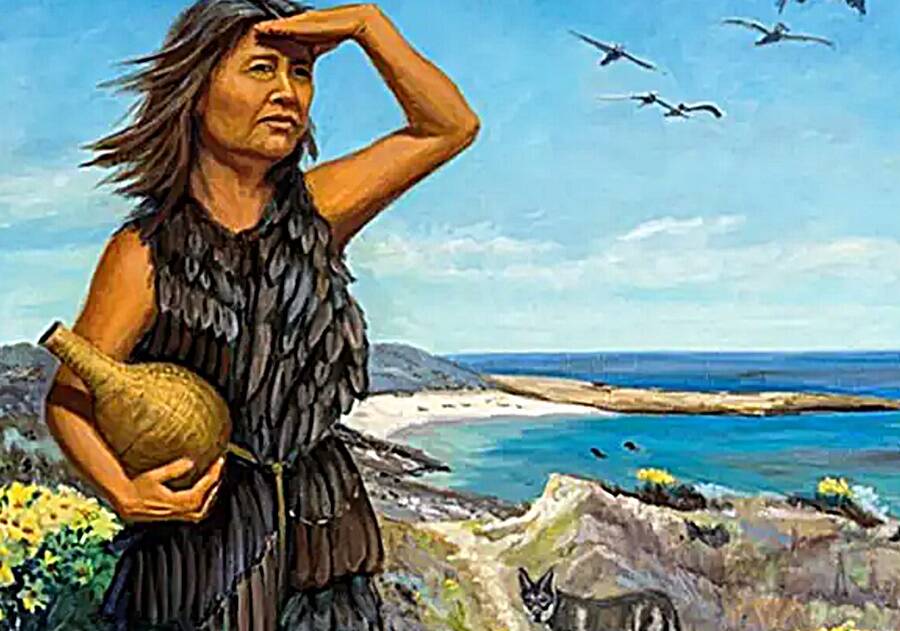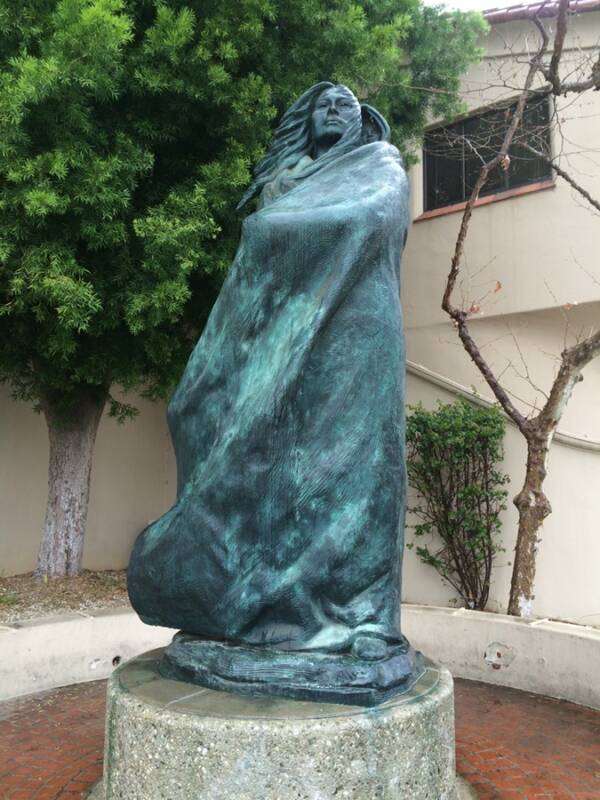Juana Maria: The Lone Native Woman Who Inspired Island Of The Blue Dolphins

National Park ServiceJuana Maria’s 18 years alone on a remote island near California inspired the novel Island of the Dolphins.
Humans are social creatures. Most people can’t imagine spending years alone on an isolated island. But for Juana Maria, one of the last Nicoleño people, it was simply a way of life.
The story of Juana Maria dates back to the 19th century on the island of San Nicolas, a remote place located in the Channel Islands territory, off the coast of southern California. Maria was part of the Indigenous tribe on the island, known as the Nicoleños.
Around this time, a mass migration of Indigenous tribes from the Channel Islands to mainland California was taking place — fueled by Christian missionaries. The Nicoleños originally wanted to stay on their island. But in 1811, they suffered a vicious massacre at the hands of Alaskan Kodiak sea otter hunters hired by Russian fur traders. The attack — as well as the spread of disease — had decimated their population.
In 1835, the 300 remaining Nicoleños decided to join the crew of a visiting Mexican schooner named Peor es Nada and move to the mainland. But Juana Maria did not join them.
Researchers have tried to determine why the Native woman chose to stay behind while the rest of her people moved. Legend has it that she jumped out of the boat at the last minute and swam back to the shore to be with her baby. But many experts think that this is dramatized lore.
Juana Maria was said to live alone on the island for 18 years. But for at least part of that time, she most likely lived with her son until his untimely death. After that, Maria was left by herself. She was reportedly picked up by a hunting party that was dispatched to the island in 1853.

Wikimedia CommonsA statue of Juana Maria at the intersection of State Street and Victoria Street in Santa Barbara.
According to accounts, Juana Maria was living in a hut partially made of whale bones, but she also occupied a nearby cave. She sustained herself on dried meat and vegetables and counted the days using a notched stick. And when the crew left for California, she decided to come with them.
Early anecdotes suggest she was unable to communicate with other Indigenous people because the dialects between them were too different. But recent studies found she was able to communicate minimally with a few Native Americans familiar enough with her language.
“The story she communicated was that she stayed behind to be with her son… and they lived together for a number of years,” said Steven Schwartz, a Navy archaeologist who spent 25 years studying artifacts found on San Nicolas. “One day the boy was in a boat fishing, there’s some disruption, the boat flips over, and the boy disappears.”
As for Juana Maria, she didn’t live much longer after she left the island. She died on October 19, 1853, just seven weeks after arriving on the mainland. The cause of her death was believed to be dysentery.
Maria’s tale is distinct compared to other survival stories. Her story is less about surviving a brutal environment and more about persevering alone. Decades later, she inspired the 1960 novel Island of the Blue Dolphins.





